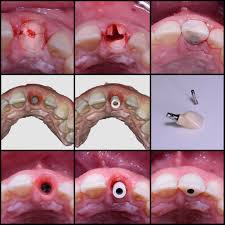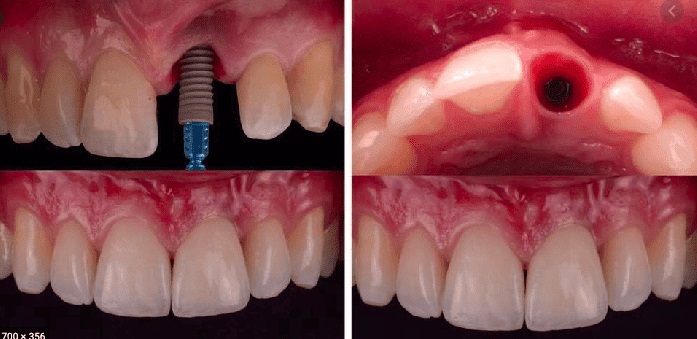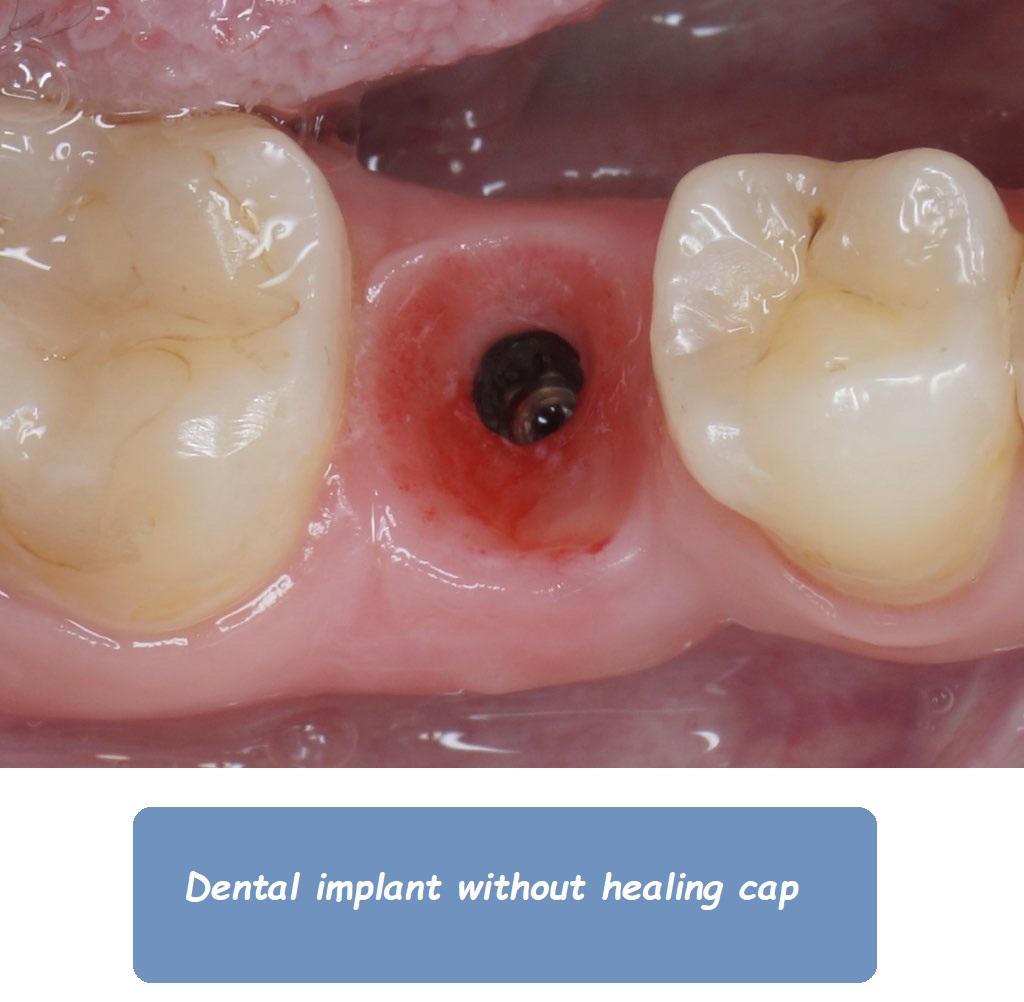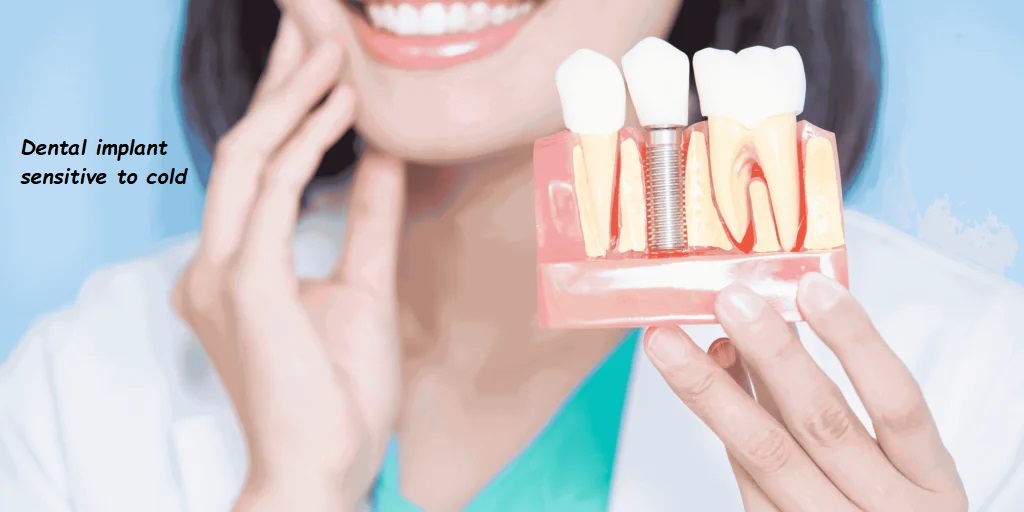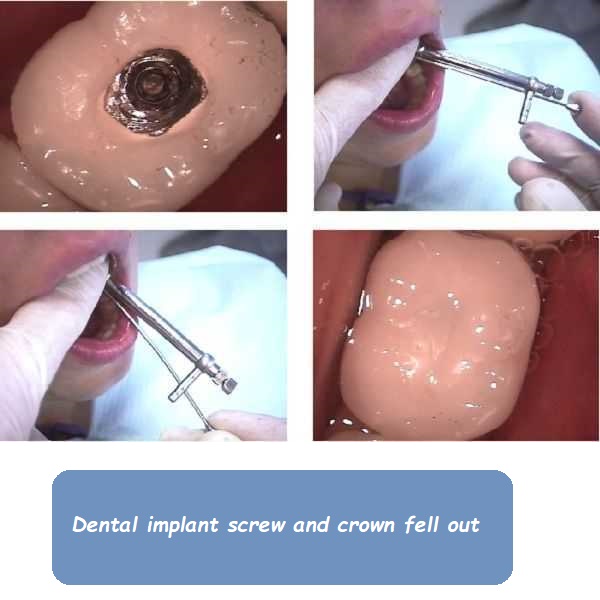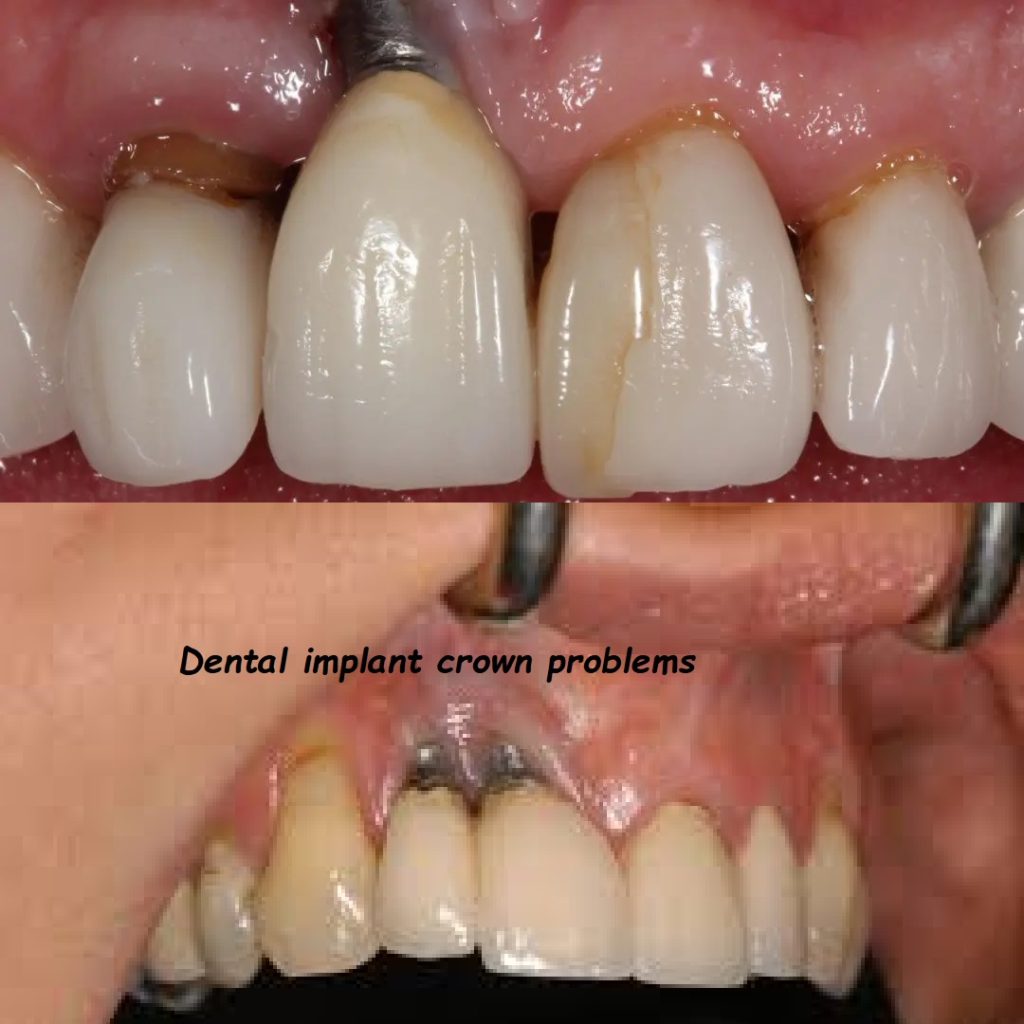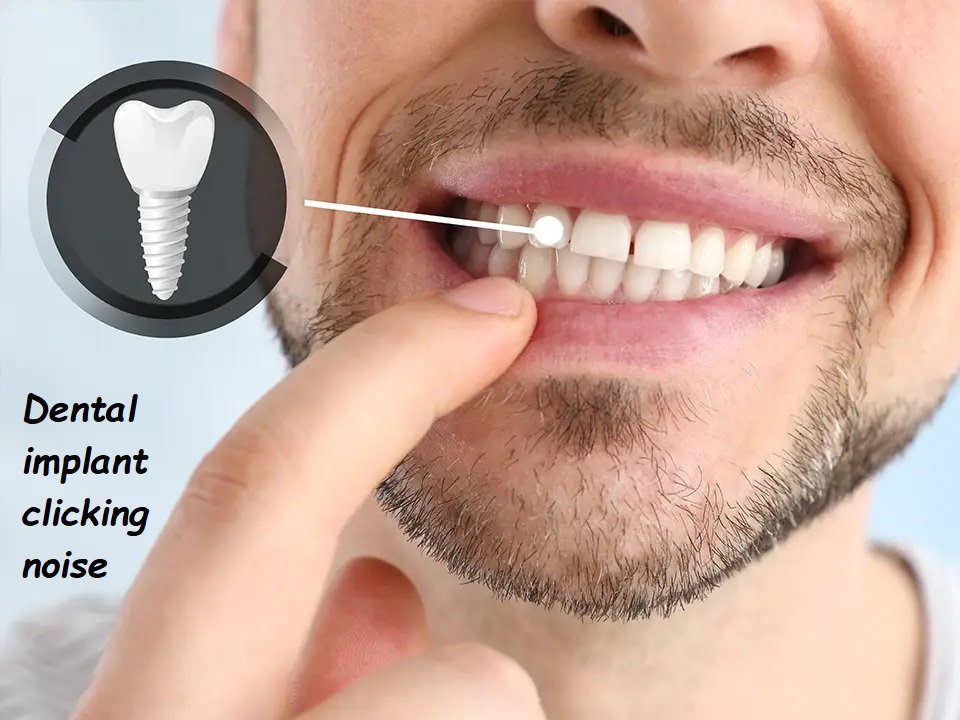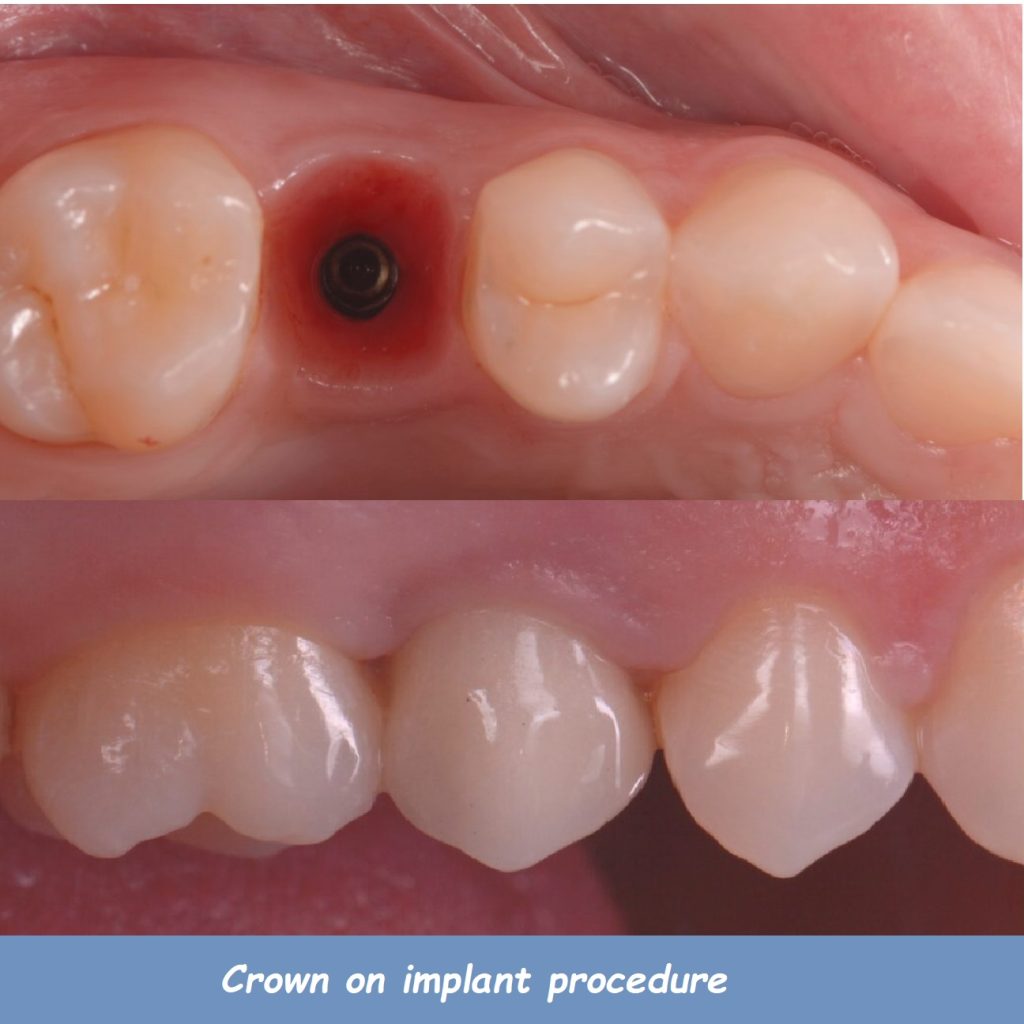implant healing cap

Dental implants are a popular and effective solution for replacing missing teeth, offering a natural-looking and long-lasting alternative to traditional dentures and bridges. A crucial component of the dental implant process is the implant healing cap, which plays a vital role in ensuring the success and longevity of the implant. In this comprehensive guide, we will explore the purpose, benefits, procedure, and aftercare of the implant healing cap, as well as address common questions and concerns. By the end of this guide, you will have a thorough understanding of the implant healing cap and its significance in dental implant treatment.
What is an Implant Healing Cap?
An implant healing cap, also known as a healing abutment, is a temporary device placed over a dental implant during the healing phase. It serves to protect the implant site, guide the healing of the surrounding gum tissue, and maintain the shape of the gumline. The implant healing cap is typically made of titanium or a biocompatible material and is designed to be easily removed and replaced with the final abutment when the healing process is complete.
Purpose of the Implant Healing Cap
The implant healing cap serves several important purposes:
- Protection: The implant healing cap protects the dental implant and the surrounding tissue from bacteria, debris, and mechanical trauma during the healing phase.
- Gum Shaping: The cap helps guide the healing of the gum tissue around the implant, ensuring that the gumline takes on a natural and aesthetically pleasing shape.
- Access Maintenance: By keeping the implant site open and accessible, the healing cap facilitates the easy placement of the final abutment and crown once healing is complete.
- Stabilization: The cap helps stabilize the implant within the jawbone, promoting osseointegration—the process by which the implant fuses with the bone.
Benefits of Using an Implant Healing Cap
The use of an implant healing cap offers numerous benefits for patients undergoing dental implant treatment:
- Enhanced Healing: The implant healing cap promotes proper healing of the gum tissue and the integration of the implant with the jawbone, leading to better long-term outcomes.
- Aesthetic Results: By shaping the gum tissue, the healing cap helps ensure that the final restoration looks natural and blends seamlessly with the surrounding teeth.
- Reduced Risk of Complications: The cap protects the implant site from infection and mechanical damage, reducing the risk of complications during the healing phase.
- Simplified Final Restoration: The use of a healing cap maintains access to the implant site, making the placement of the final abutment and crown more straightforward and less invasive.
The Implant Healing Cap Procedure
The process of placing an implant healing cap involves several steps, which are typically carried out over multiple dental visits. Understanding each step can help you prepare for the procedure and set realistic expectations for the treatment process.
Initial Consultation and Examination
The first step in getting an implant healing cap is an initial consultation and examination with your dentist or oral surgeon. During this visit, the dental professional will:
- Assess Your Oral Health: The dentist will thoroughly examine your teeth, gums, and overall oral health to determine if you are a suitable candidate for dental implants. X-rays and other diagnostic tools may be used to evaluate the health of your jawbone and the condition of any remaining teeth.
- Discuss Treatment Options: The dentist will discuss your treatment options, including the use of dental implants and the implant healing cap, to address your specific needs and preferences.
- Create a Treatment Plan: Based on the examination and discussion, the dentist will create a personalized treatment plan that outlines the steps involved, the type of implant healing cap recommended, and the estimated timeline and costs.
Implant Placement Surgery
Once the treatment plan is established, the next step is the placement of the dental implant. This surgical procedure involves:
- Administering Anesthesia: Local anesthesia or sedation is used to ensure comfort during the procedure.
- Making an Incision: The dentist or oral surgeon makes an incision in the gum tissue to expose the jawbone.
- Drilling a Pilot Hole: A small hole is drilled into the jawbone to create a space for the dental implant.
- Inserting the Implant: The dental implant, typically made of titanium, is carefully inserted into the pilot hole. The implant acts as a replacement root for the missing tooth.
- Placing the Implant Healing Cap: Once the implant is securely placed, the implant healing cap is attached to the top of the implant. The gum tissue is then sutured around the cap to allow for proper healing.
Healing Phase
The healing phase is a critical period during which the implant integrates with the jawbone—a process known as osseointegration. This phase can take several months and involves:
- Gum Tissue Healing: The gum tissue around the implant healing cap heals and begins to take on a natural shape. The cap helps guide this process, ensuring an aesthetically pleasing gumline.
- Bone Integration: The implant gradually fuses with the jawbone, providing a stable foundation for the final restoration. Regular follow-up visits with your dentist are essential to monitor progress and ensure proper healing.
Aftercare and Maintenance of the Implant Healing Cap
Proper aftercare is crucial to ensure the success of the implant healing cap and the overall dental implant treatment. Here are some essential tips for caring for your implant healing cap:
Oral Hygiene
Maintaining good oral hygiene is essential for the success of your dental implant and healing cap. Follow these guidelines:
- Brush Regularly: Brush your teeth at least twice a day using a soft-bristled toothbrush and non-abrasive toothpaste. Be gentle around the implant healing cap to avoid irritation.
- Floss Daily: Floss daily to remove plaque and food particles from between your teeth and around the implant site. Special floss threaders or interdental brushes can help clean around the healing cap.
- Use Antibacterial Mouthwash: An antibacterial mouthwash can help reduce the risk of infection and promote healing. Rinse your mouth with the mouthwash as directed by your dentist.
Diet and Nutrition
Your diet can impact the healing process. Follow these dietary guidelines to support proper healing:
- Soft Foods: Stick to soft foods that are easy to chew, especially during the initial healing phase. Avoid hard, crunchy, or sticky foods that could damage the implant healing cap or irritate the surgical site.
- Balanced Diet: Maintain a balanced diet rich in vitamins and minerals to support overall oral health and healing. Foods high in calcium, vitamin D, and protein are particularly beneficial for bone health.
- Stay Hydrated: Drink plenty of water to stay hydrated and support the healing process. Avoid sugary or acidic beverages that could harm your oral health.
Regular Dental Check-Ups
Regular dental check-ups are essential to monitor the progress of your implant healing cap and overall implant treatment. During these visits, your dentist will:
- Evaluate Healing: The dentist will assess the healing of the gum tissue and the integration of the implant with the jawbone.
- Clean the Implant Site: Professional cleanings help remove plaque and tartar from around the implant healing cap, reducing the risk of infection and complications.
- Address Concerns: Any concerns or issues with the implant healing cap can be addressed promptly, ensuring the success of your treatment.
Potential Risks and Complications
While the use of an implant healing cap offers numerous benefits, there are potential risks and complications to be aware of:
Infection
Infection at the implant site is a potential risk that can affect the success of the dental implant. Signs of infection may include:
- Redness and Swelling: Red, swollen, or tender gum tissue around the implant healing cap may indicate an infection.
- Pain: Persistent or worsening pain at the implant site can be a sign of infection.
- Discharge: Pus or other discharge from the implant site is a clear sign of infection and requires prompt attention.
Gum Recession
Gum recession around the implant healing cap can expose the implant and affect its stability. Contributing factors may include:
- Poor Oral Hygiene: Inadequate oral hygiene can lead to gum disease and recession.
- Aggressive Brushing: Brushing too aggressively can damage the gum tissue and contribute to recession.
Implant Failure
Although rare, implant failure can occur if the implant does not properly integrate with the jawbone. Contributing factors may include:
- Inadequate Bone Density: Insufficient jawbone density can affect the stability of the implant.
- Smoking: Smoking can impair healing and increase the risk of implant failure.
Common Questions About Implant Healing Caps
How Long Does an Implant Healing Cap Stay in Place?
The duration for which an implant healing cap stays in place can vary depending on the individual case and the extent of healing required. Generally, the healing cap remains in place for several weeks to a few months, allowing adequate time for the gum tissue to heal and the implant to integrate with the jawbone.
Can I Eat Normally with an Implant Healing Cap?
During the initial healing phase, it is advisable to stick to soft foods and avoid hard, crunchy, or sticky foods that could damage the implant healing cap or irritate the surgical site. As healing progresses, you can gradually reintroduce a wider variety of foods into your diet.
Is It Normal to Experience Pain with an Implant Healing Cap?
Some discomfort and swelling are normal following the placement of an implant healing cap. Over-the-counter pain relievers and ice packs can help manage pain and reduce swelling. If pain persists or worsens, contact your dentist for further evaluation.
How Do I Clean Around the Implant Healing Cap?
Maintaining good oral hygiene is essential for the success of your implant healing cap. Brush your teeth at least twice a day using a soft-bristled toothbrush and non-abrasive toothpaste. Floss daily and use an antibacterial mouthwash to reduce the risk of infection.
Conclusion
An implant healing cap is a crucial component of the dental implant process, playing a vital role in ensuring the success and longevity of the implant. By understanding the purpose, benefits, procedure, and aftercare of the implant healing cap, patients can make informed decisions about their dental health and achieve optimal results. Proper aftercare, including good oral hygiene, a balanced diet, and regular dental check-ups, is essential to support the healing process and prevent complications. If you have any questions or concerns about your implant healing cap, consult with your dentist to ensure the best possible outcome for your dental implant treatment.
By following the guidelines and recommendations outlined in this comprehensive guide, you can ensure the success of your implant healing cap and enjoy the many benefits of a healthy, functional, and aesthetically pleasing smile.
How Long Does a Healing Cap Stay on a Dental Implant?
The duration a healing cap stays on a dental implant typically ranges from a few weeks to several months, depending on individual healing processes and the specific treatment plan designed by the dentist or oral surgeon. Healing caps, also known as healing abutments, are placed on the dental implant post to protect the implant site and facilitate the healing of the surrounding gum tissue.
During the initial healing phase, osseointegration occurs, where the implant integrates with the jawbone. This process generally takes 3 to 6 months. The healing cap remains in place throughout this period to ensure the implant remains undisturbed and the gum tissue heals properly around it.
Factors influencing the duration include the patient’s overall health, bone density, the location of the implant, and adherence to post-operative care instructions. Regular follow-up appointments allow the dentist to monitor healing and determine the optimal time for replacing the healing cap with the permanent abutment and dental crown.
What is the Healing Cap on Implants?
A healing cap, or healing abutment, is a small, screw-like device attached to the top of a dental implant during the healing phase. It serves several critical functions in the dental implant process. Firstly, it protects the inner workings of the implant from debris and infection. Secondly, it helps shape the gum tissue around the implant, creating a proper contour for the future dental crown.
Healing caps are typically made of titanium, a biocompatible material that integrates well with human tissue. The cap ensures that the gum tissue heals in the correct form, facilitating easier placement of the permanent abutment and crown. By providing a stable and protected environment for the implant site, the healing cap plays a vital role in the success of the overall dental implant procedure.
Can I Chew on an Implant Healing Cap?
Chewing on an implant healing cap is generally not recommended, especially during the initial stages of the healing process. The healing cap is designed to protect the implant and aid in the healing of the surrounding gum tissue. Applying pressure or chewing directly on the cap can disrupt this process, potentially leading to complications such as implant movement, infection, or gum tissue damage.
Patients are typically advised to follow a soft-food diet for the first few weeks post-surgery to minimize stress on the implant site. As healing progresses and with the dentist’s approval, normal eating habits can gradually resume. Adhering to post-operative care instructions and avoiding hard or sticky foods ensures the implant site remains stable and free from complications during the critical healing phase.
Can You Get a Dental Implant Without a Healing Cap?
While healing caps are standard in most dental implant procedures, there are alternatives depending on individual cases and the dentist’s approach. In some instances, dentists might use a one-stage implant procedure where the implant and a temporary abutment are placed simultaneously, eliminating the need for a separate healing cap.
Another alternative is the use of a cover screw, which is placed flush with the gum line and covered by the gum tissue during healing. This method typically involves a second minor surgery to expose the implant and place the abutment after osseointegration is complete.
Ultimately, the use of a healing cap or an alternative method depends on factors such as the patient’s oral health, the location of the implant, and the specific treatment plan. Consulting with an experienced dental professional helps determine the most appropriate approach for each individual case.
What is the Next Step After the Healing Cap?
After the healing cap has served its purpose and the implant site has adequately healed, the next step involves the placement of the abutment and the dental crown. The healing cap is first removed to expose the dental implant. An abutment, a connector piece, is then attached to the implant. This abutment will hold the dental crown securely in place.
Following the placement of the abutment, an impression of the abutment and the surrounding teeth is taken. This impression is used to fabricate the custom dental crown that matches the shape, size, and color of your natural teeth. Once the crown is ready, it is securely attached to the abutment, completing the restoration process. This final step restores both the functionality and aesthetics of the patient’s smile.
How to Remove an Implant Healing Cap?
Removing an implant healing cap is a straightforward procedure typically performed by a dentist or oral surgeon. The process involves:
- Local Anesthesia: If necessary, a small amount of local anesthesia may be applied to ensure comfort during the procedure.
- Accessing the Cap: The dentist uses a specialized tool to gently unscrew the healing cap from the dental implant. This tool is designed to fit the specific type of healing cap used.
- Cleaning: Once the cap is removed, the area is cleaned to ensure there is no debris or infection present.
- Placement of the Abutment: The abutment is then attached to the implant, preparing the site for the final crown.
The removal process is typically quick and painless, thanks to the use of appropriate instruments and techniques.
What Happens if My Healing Cap Comes Off the Implant?
If your healing cap comes off the implant, it is essential to contact your dentist as soon as possible. The healing cap protects the implant site and aids in the proper healing of the surrounding gum tissue. Without it, the area is vulnerable to infection, debris, and improper healing.
In the interim, keep the area clean by gently rinsing with a saline solution or an antibacterial mouthwash. Avoid chewing on the implant site and refrain from touching it with your tongue or fingers. Your dentist will likely reattach the cap or provide a new one, ensuring the implant site remains protected and continues to heal properly.
Is the Healing Cap Painful After Dental Implants?
Some discomfort or mild pain is normal after dental implant surgery, including the placement of the healing cap. This discomfort typically subsides within a few days as the site begins to heal. Pain can be managed with over-the-counter pain medications, such as ibuprofen or acetaminophen, as recommended by your dentist.
However, persistent or severe pain could indicate an issue such as infection or improper healing and should be addressed by your dentist promptly. Proper post-operative care, including maintaining oral hygiene and following your dentist’s instructions, helps minimize pain and ensures a smooth healing process.
Can You Eat on an Implant Healing Cap?
Eating on an implant healing cap should be done with caution, especially in the initial healing stages. It is generally advised to avoid chewing directly on the healing cap to prevent disruption of the implant site. Adopting a soft-food diet and avoiding hard, crunchy, or sticky foods can help protect the healing cap and the implant.
As healing progresses and with your dentist’s approval, you can gradually reintroduce firmer foods into your diet. Always follow your dentist’s specific recommendations regarding diet and care to ensure the implant site remains stable and heals properly.

